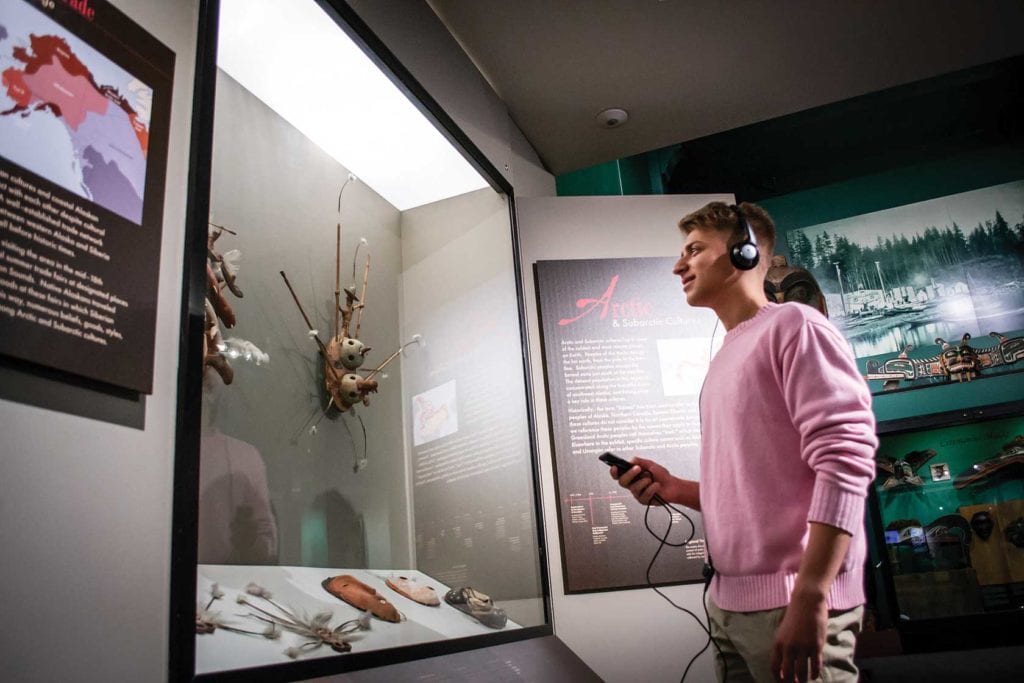Native American poetry playlist
Poetry recordings accompany exhibits at Harvard’s Peabody Museum

Visitors to Harvard’s Peabody Museum of Archaeology and Ethnology may be seen wandering around the museum with headphones on. They’re listening to a playlist curated specifically for the Peabody experience. Instead of Top 40 hits, the playlist features eight poems read by Native American authors. The recording allows guests to hear artistic works produced by Native artists in addition to seeing historical objects of Native peoples.
“I was excited to read about Indigenous People’s Day in Cambridge and I thought, ‘We should support this,’” says Polly Hubbard, Director of Education Programs at the Peabody. The poems were drawn from “New Poems of Native Nations,” a Graywolf Press anthology published in July. From there, a community review board, comprising almost completely of members of Native American descent, decided which poems to include.
“Winiiam Aagimeke/William Making Snowshoes” by Margaret Noodin (Anishinaabe) is read first in its original text and then in English. This allows listeners to experience not only the words and the meaning of the poem, but the beat and the rhythm.
Hubbard says museum visitors often tire out quickly because they are either overstimulated or underengaged. “What was needed was a refresh of the current collection, a contemporary overlay,” she says. Ethnology is a big topic for the casual museum-goer, but with the Native American Poets Playlist, visitors get a more accessible, artistic entrance point to the lives of early Native people.
The anthology “New Poems of Native Nations” is available for purchase in the museum gift shop. The Peabody website features biographies for each poet and a list of the poems included in the playlist.
The website also offers a bonus historical poem found in the Massachusetts Historical Society archives. Nipmuc student Benjamin Larnell (ca. 1694–1714) wrote “Fable of the Fox and the Weasel” in the Colonial Era. The original poem is written in Latin. Hubbard says it’s likely that the poem was a test of Larnell’s command of the language for his studies. Richard Tarrant, Pope professor of Latin Language and Literature, emeritus, translated the poem and reads it in the online recording first in Latin and then in English. It provides an interesting comparison between Native American poetry then and now.
Hubbard hopes to use the audio format in future exhibitions. She encourages visitors to record their experience in the feedback survey at the museum entrance. Hubbard says, “I’m hoping it brings a more emotional connection to the historical objects and more awareness of the gorgeous artwork coming out of Indigenous populations.”







